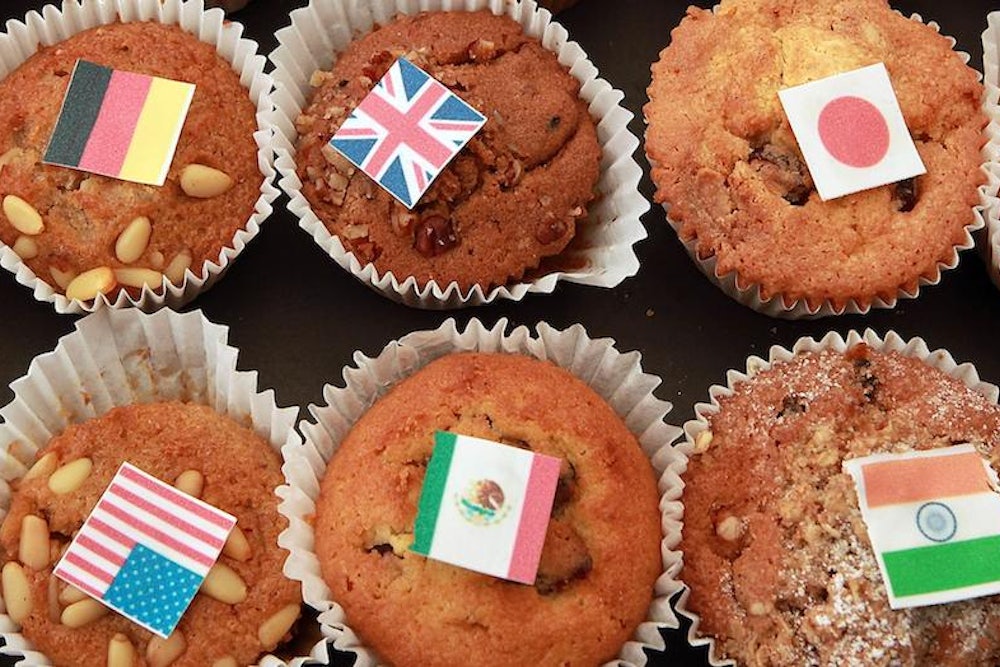As any close reader of The New York Times knows, a reliable theme of the paper is gentrification and the changes it brings. The word, which first appeared in the Times in the late 70s, has plenty of close cousins on the page—urban revitalization, neighborhood change, renewal, good investment opportunity. It is perennially celebrated in the Style section, fretted over in the Metropolitan pages, and coolly broken down by the relevant numbers in Real Estate.
But aside from the obvious markers, like demographic changes and home price increases, there are other ways in which the paper signals that a neighborhood has “arrived,” or is on the cusp of doing so. Sometimes it is explicit, and sometimes, things are a bit subtler, as it was a few weeks ago when the print version of the paper teased an inside-pages story on a family’s search for the perfect home in Harlem with a photo of a mop-haired, white kid playing a violin. The telling class signifiers that readily signal neighborhood change to the casual reader have themselves changed with the times, growing rather more precious recently. An early gentrification trend piece, focused on Manhattan in 1979, cited skyrocketing sales at Bloomingdale’s and the appearance of book stores. One from this year on the changing face of Brooklyn’s Prospect-Lefferts Garden pointedly cited “Sam Kelly, 28, [who] works at the neighborhood’s newest coffee shop, 10-day-old Tip of the Tongue, which bakes its own strawberry ricotta muffins and ginger scones, and has lived nearby since December.” Partly, this is simply that fashions change; partly, it is that cities as a whole are far more developed than they were 30 years ago. Below, a selective but representative history of the Times’ signs of gentrification throughout various waves of it, both in New York city and elsewhere in the country.
1979, Ridgewood, Queens: A non-Brooklyn ZIP code.
1979, Dorchester, Boston: Film crews from “This Old House.”
1980, Brooklyn Heights, Brooklyn: Citibanks, Walden Books, and Burger King.
1984, East Village: A sushi bar.
1984, Fort Greene, Brooklyn: Petrossian beluga caviar at $38 for one and three- quarters ounces
1987, Clinton Hill, Brooklyn: The ability to get a cab to take you there from Manhattan.
1987, South End, Boston: late-model BMWs.
1987, The Fillmore, San Francisco: $300 Japanese wool sweaters, aged cheese at $15/pound.
1988, Prospect Heights, Brooklyn: “yuppies” asking for directions.
1989, Clinton, Manhattan: cappuchino, sushi, and $4 imported beer; shops selling balloon-greetings and oversized cookies.
1989, Prospect Heights, Brooklyn: A Jaguar.
1995, Red Hook, Brooklyn: Fear of acronym-ification. “’Please don't call us RedHo,’ she said, wincing at the thought of Red Hook becoming like SoHo (South of Houston Street) or TriBeCa (the Triangle Below Canal Street).”
1995, The Bowery or “an area sardonically referred to by some as Esso (East of SoHo),” Manhattan: The Connecticut Muffin shop, “which also has a branch in New Canaan, CT.”
1998, Alphabet City, Manhattan: “Rent”-inspired tourists.
1999, Baltimore: Crate and Barrel, Barnes and Noble
1999, Mission District, San Francisco: “young, trendy and non-Hispanic” latte-sippers.
2000, Chelsea, Manhattan: La Cafetiere housewares
2001, Morningside Heights, Manhattan: Starbucks.
2001, Fort Greene, Brooklyn: A new Corcoran office, a sushi restaurant.
2004, Brooklyn: The presence of a (fictional) “Sex and the City” character.
2005: Lower East Side, Manhattan: Starbucks
2005, Chelsea, Manhattan: two restaurants within three blocks that have bathroom valets.
2006, Red Hook, Brooklyn. A specialty liquor store that sells 100 brands of bourbon.
2006, East Harlem, Manhattan: Car dealerships
2006, Yorkville, Manhattan: an Equinox gym.
2006, Far West Village, Manhattan: Poodles permitted at the Ear Inn.
2007, Fort Greene, Brooklyn, 2007: less BBQing and more tanning in Fort Greene park
2008, Dumbo, Brooklyn: $15 French toast
2010, Long Island City, Queens: “[S]ushi bars. A teahouse. An upscale grocery store. A cocktail lounge where the word “mixologist” could reasonably be uttered. Multiple options for doggy day care,” as well as $13.79 teriyaki swordfish kabobs and truffled Gouda for $25.99 a pound; $23 shampoo.
2011, Williamsburg, Brooklyn: $800 strollers.
2012, Montauk, New York: a sign with a fedora with a slash through it, signaling no hipsters; people splitting bills seven different ways on seven different credit cards.
2012, Crown Heights, A long wait at a pizza restaurant named for a toy poodle.
2012, South Bronx: Yoga studio, farmer’s market, arugula and organic spinach and banana-chip yogurt muffins.
2013, New York City: Organic drycleaners.
2013, Ditmas Park, Brookyn: Brooklyn Industries, “the hipster outfitter.”
2013, East Williamsburg, Brooklyn: a vegan doughnut shop
